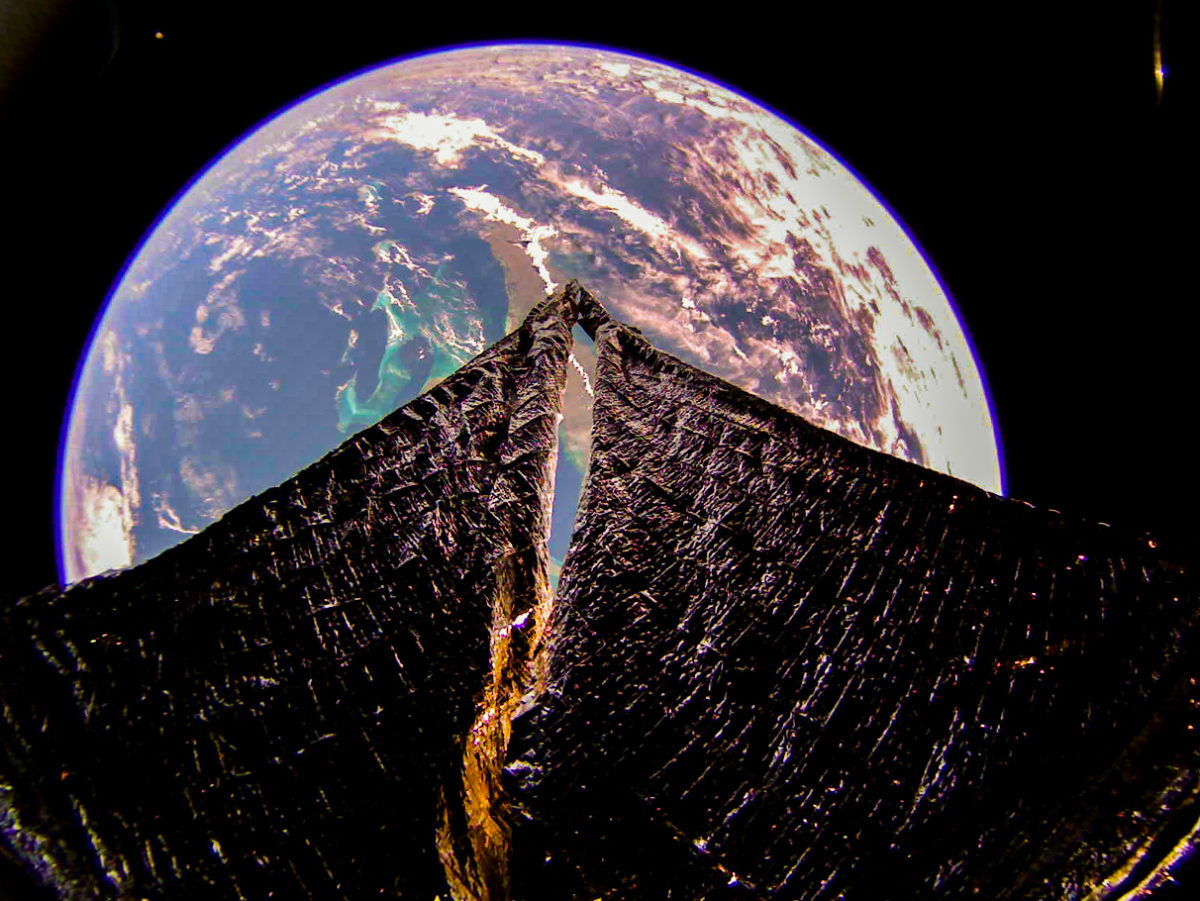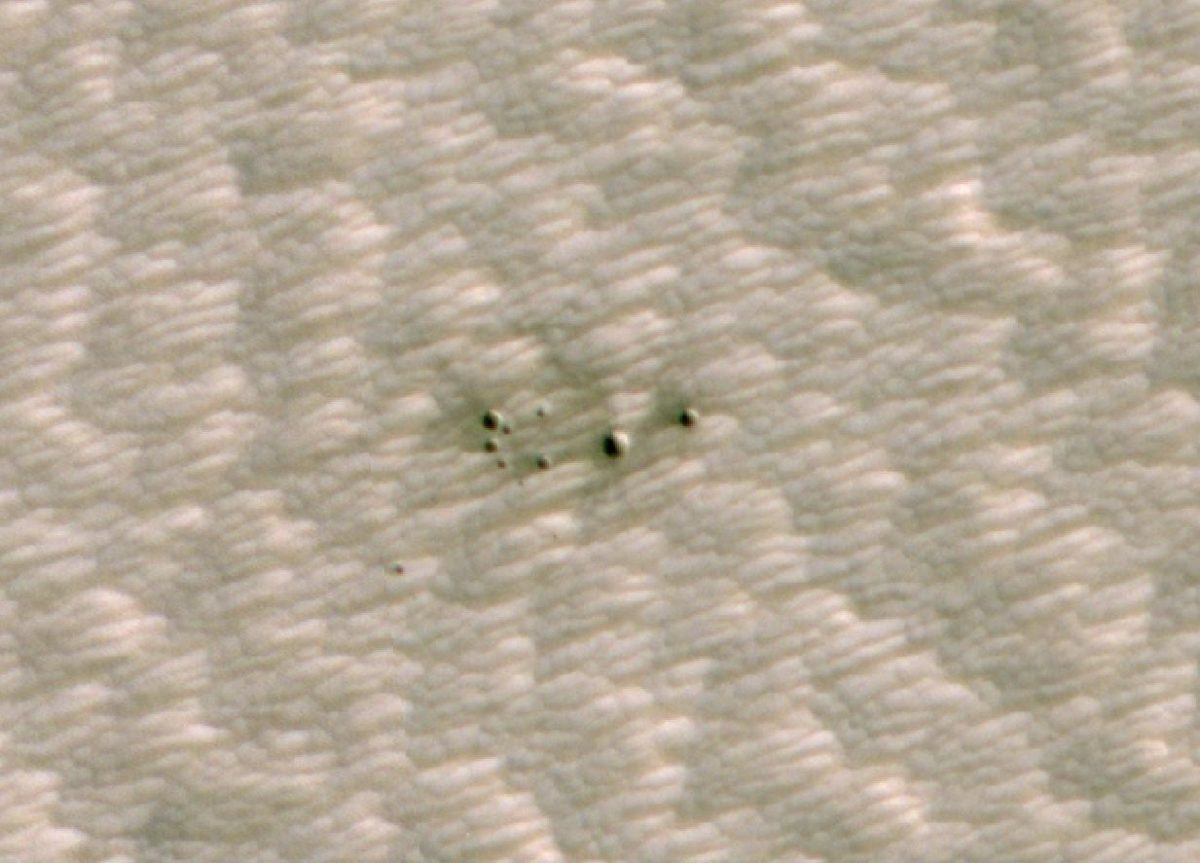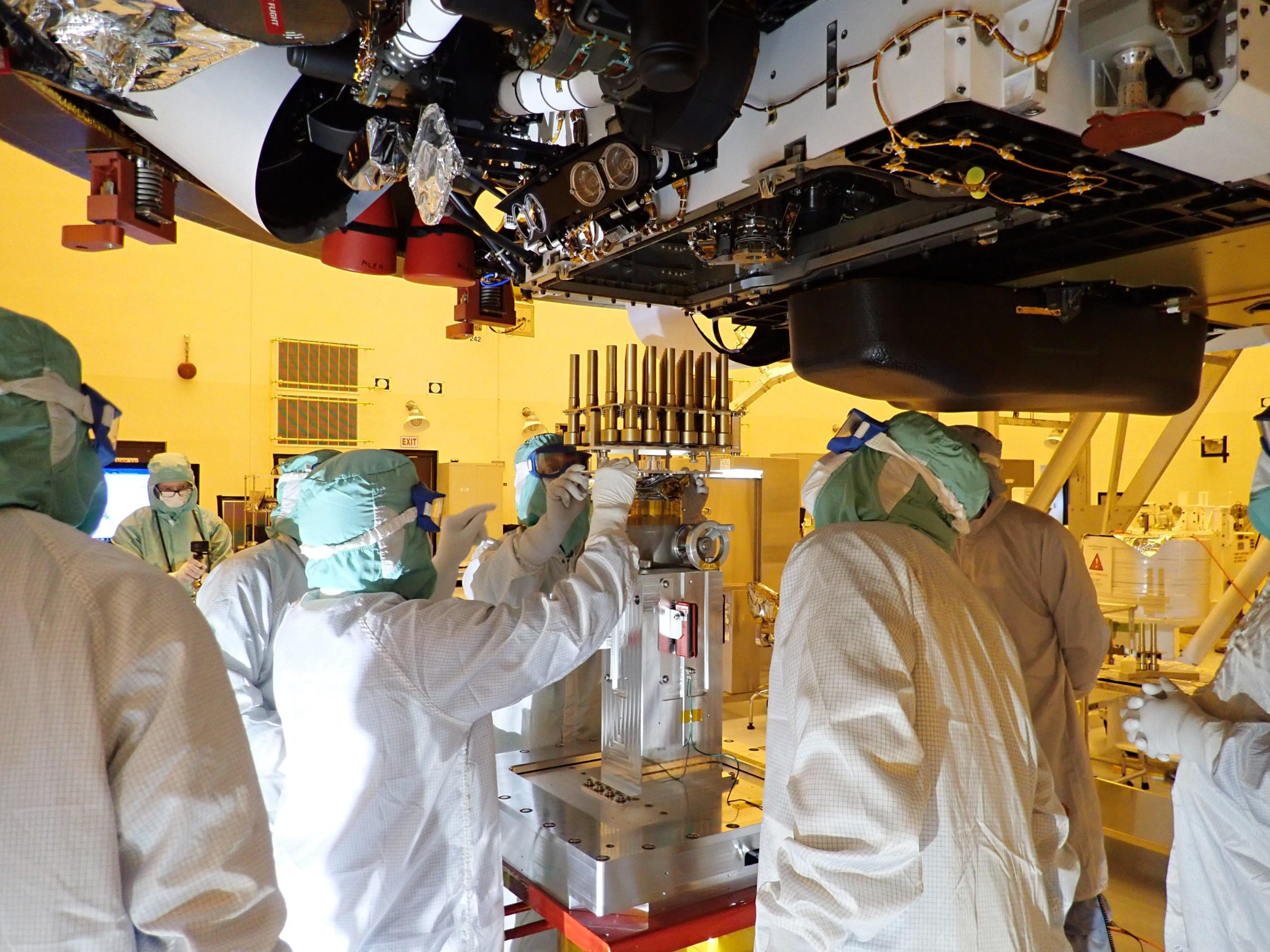The Downlink • Oct 09, 2020
How to stop microbes from hitching a ride to space
Space Snapshot

The Planetary Society’s crowdfunded LightSail 2 spacecraft took this selfie of its solar sails with Earth in the background. You can see Cuba and the Bahamas with their gorgeous tropical waters, and in the upper-left of the image you can see the Moon, a tiny brownish dot.
You love space, now take action
This weekly newsletter is your toolkit to learn more about space, share information with your friends and family, and take direct action to support exploration. Anyone can subscribe at planetary.org/connect to receive it as a weekly email.
Mission Briefings


NASA has for the first time used artificial intelligence to find a new crater on Mars. The crater appeared sometime between March 2010 and May 2012, according to its sudden appearance in images (pictured) captured by the agency’s Mars Reconnaissance Orbiter. Image credit: NASA/JPL-Caltech/University of Arizona.

NASA’s James Webb Space Telescope has completed all environmental tests to ensure it can survive its ride to space next year. The observatory will now undergo one last mirror and sunshade deployment before shipping to South America for launch.

China released an interplanetary selfie of the Tianwen-1 spacecraft, captured by a small camera-equipped probe it jettisoned. Tianwen-1 will arrive at Mars in February along with NASA’s Perseverance Rover and the UAE’s Hope orbiter.

The European Space Agency’s next Mars mission has a launch date of 20 September 2022. The mission, which missed its original 2020 launch window, must now wait for the next window when Mars and Earth are optimally aligned.

Astronauts used the robotic arm on the International Space Station to capture a Cygnus spacecraft carrying 4 tons of supplies. The ship is named after Kalpana Chawla, the first woman of Indian descent to fly in space, who died in 2003 aboard Space Shuttle Columbia.
From The Planetary Society


It’s important (and tricky) to keep microbes from accidentally spreading around the solar system. Every time a spacecraft is sent to another planet, it has to be sterilized to keep microorganisms from coming along for the ride. When we start sending humans to Mars, things will get even more complicated. This week’s Planetary Radio brings you to the recent Humans to Mars summit, where host Mat Kaplan moderated a panel about planetary protection, the fascinating and challenging effort to keep microbes where they belong. Pictured: A team of engineers and technicians installing sample tubes into the belly of NASA’s Perseverance rover, taking every precaution not to contaminate them with Earthly microbes.

How might the U.S. election affect space policy? In the latest Planetary Radio: Space Policy Edition Jeff Foust, senior staff writer for SpaceNews, joins our chief advocate Casey Dreier to discuss the space policy of a possible Joe Biden administration, and what if anything could change at NASA if President Trump is reelected.
What's Up

Check out Jupiter and Saturn in the early evening sky in the west. On 13 October Mars will be in opposition, meaning that it is on the opposite side of the Earth from the Sun and very bright in the night sky. In the pre-dawn sky, Venus shines very brightly in the east.
Wow of the Week

Some things never go out of style. This vintage space image from 1975 shows one of NASA’s Viking landers being prepared for dry heat sterilization, a method that remains the gold standard for planetary protection measures today. The two Viking landers performed the first biological experiments looking for signs of life on the Red Planet, so it was critically important that they not be contaminated with microbial life from Earth.
Do you have a suggestion for the Wow of the Week? We’re looking for space-related art, music, gadgets, quotes, fashion, burning questions, brief sci-fi passages, or anything else that will make our readers go “Wow!” Send us your idea by replying to any Downlink email or writing to [email protected], and please let us know if you’re a Planetary Society member.


 Explore Worlds
Explore Worlds Find Life
Find Life Defend Earth
Defend Earth


